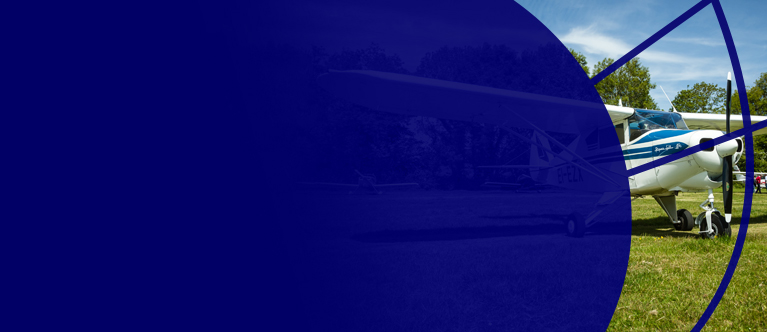Maintenance Programme - Aircraft with EASA Certificate of Airworthiness
The maintenance of each aircraft shall be organised in accordance with an Aircraft Maintenance Programme (AMP). For aircraft subject to Part M e.g. complex motor-powered aircraft or aircraft used in Commercial Air Transport, the AMP should be developed in accordance with the criteria laid down in Part M M.A.302 and be approved by the IAA or a CAMO.
For aircraft subject to Part ML, e.g. light aircraft not involved in Commercial Air Transport, the owner may use an AMP approved by a CAMO/CAO or a "Self-Declared" AMP. Additional information is available in AAM 10.
Who is responsible for ensuring that the aircraft is maintained in accordance with the AMP?
The owner is responsible for ensuring that;
- The aircraft is maintained in an airworthy condition;
- Any operational and emergency equipment fitted is correctly installed and serviceable;
- The Airworthiness Review Certificate remains valid;
- The maintenance of the aircraft is performed in accordance with the Aircraft Maintenance Programme (AMP).
The owner may contract the tasks associated with the continuing airworthiness (e.g. maintenance planning) to a Continuing Airworthiness Management Organisation (CAMO) or Combined Airworthiness Organisation (CAO). In this case, the CAMO/CAO assumes responsibility for the proper accomplishment of the contracted tasks.
Who can perform (certify) maintenance?
Maintenance may be certified by an appropriately rated Part 145 Maintenance Organisation, Part CAO Maintenance Organisation, or a Part 66 Licence holder when the MTOM is less than 2,730kg or a sailplane, powered sailplane, or balloon. Some maintenance may be certified by the pilot-owner when listed in the AMP.
A Part CAO approved organisation may install components with EASA or FAA certification on General Aviation Aircraft. They may also certify components with an EASA Form 1. However, these components may not be installed on aircraft used for Commercial Air Transport.
The overhaul of engines and propellers for CS-VLA (Very Light Aeroplanes), CS-22 ((powered) Sailplanes) and LSA (Light Sports Aircraft) aircraft can be certified by personnel appropriately qualified in accordance with Part 66. The maintenance performed, in these cases, is not eligible for the issuance of an EASA Form 1.
List of EASA Part 145 maintenance organisations in Ireland
List of EASA Part 145 or Part CAO maintenance organisations in Ireland
What maintenance can a pilot-owner perform?
A list of maintenance tasks which may be performed by the pilot-owner is available in Appendix II to Annex Vb (Part ML) of Regulation 1321/2014. The permitted pilot-owner who may perform them, must be identified in Aircraft Maintenance Programme according to the principles laid out in the regulation. This privilege only applies to aircraft subject to Part ML e.g. non-complex motor-powered aeroplanes with an MTOM of less than 2,730kg, rotorcraft of 1 200 kg MTOM or less certified for a maximum of up to 4 occupants, sailplanes, powered sailplanes or balloons.
How long must I retain the maintenance records for?
1. All detailed maintenance records in respect of the aircraft and any service life limited component fitted thereto, until such time as the information contained therein is superseded by new information equivalent in scope and detail but not less than 36 months after the aircraft or component has been released to service
2. the total time in service (hours, calendar time, cycles and landings) of the aircraft and all service life-limited components, at least 12 months after the aircraft or component has been permanently withdrawn from service; and
3. the time in service (hours, calendar time, cycles and landings) as appropriate, since last scheduled maintenance of the component subjected to a service life limit, at least until the component scheduled maintenance has been superseded by another scheduled maintenance of equivalent work scope and detail; and
4. the current status of compliance with maintenance programme such that compliance with the approved aircraft maintenance programme can be established, at least until the aircraft or component scheduled maintenance has been superseded by other scheduled maintenance of equivalent work scope and detail; and
5. the current status of airworthiness directives applicable to the aircraft and components, at least 12 months after the aircraft or component has been permanently withdrawn from service; and
6. details of current modifications and repairs to the aircraft, engine(s), propeller(s) and any other component vital to flight safety, at least 12 months after they have been permanently withdrawn from service.
To order Airframe/Engine/Propeller Logbooks from the IAA, please contact licensing@iaa.ie or phone (01) 6718655.
Standard Changes/Standard Repairs on an EASA aircraft subject to Part ML
Standard Changes and Standard Repairs can be found in Certification Specification CS-STAN. If the aircraft is included in the eligibility of the change or repair, it may be accomplished on that aircraft. A record of the embodiment of any standard change or repair in accordance with CS-STAN must be recorded on an EASA Form 123.
Maintenance Programme - Aircraft with a Flight Permit
Aircraft (incl. helicopters) not affected by EASA Regulations, operating on a Flight Permit, shall undergo an annual Flight Permit inspection in accordance with the maintenance programme of the maintenance organisation approved for that aircraft e.g. ILAS, NMAI.
Maintenance shall be certified by inspectors authorised by the nationally approved maintenance organisation. Pilot-owner maintenance may also be allowed, subject to an approved procedure being detailed in the organisation's Procedures Manual.
The owner may also have maintenance performed and certified an EASA approved maintenance organisation or individual with an appropriate rating subject to compliance with AN A15 This does not include the annual Flight Permit inspection.


